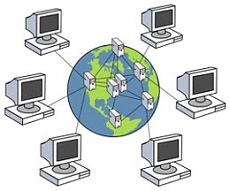
Traditional wide area networks (WANs) have undergone many changes, but they are still lacking, in many ways, when it comes to user-friendliness and consistency. Among the most common challenges experienced by end-users are the lack of cloud-ready operability and the necessity of having separate WAN infrastructure for different types of transport. Plus, it’s difficult to access data on real-time performance and utilization because implementing even basic changes on WANs can take months. The growing cost of adding bandwidth for new applications also isn’t something to laugh at.
Software-defined wide area network (SD-WAN)— an approach to making networks more agile and flexible through virtualization and software abstraction — is one way of resolving these challenges. The technology makes it much easier to design, build, and operate complex networks like WANs. In particular, SD-WAN abstracts the network into software, building a network overlay and decoupling or separating the WAN from the underlying hardware and transport network.
SD-WAN offers the following benefits:
- Flexible Transport Options
One of the primary draws of SD-WAN technology is the ability to manage multiple types of transport options. In the old days, maintaining a hybrid network, like applying a VPN solution to a traditional MPLS network, means creating and installing manual configurations on every device. Now, network managers can administer and monitor the WAN from a single interface, and users get consistent WAN built on any transport, regardless if it’s MPLS, Internet, 4G/LTE, or Broadband. What’s more, the network can route less-critical traffic through more affordable transport paths, considerably lowering bandwidth costs. Also, this setup eliminates the need to find workarounds every time you must make iterations or policy changes.
- Secured, Hardened Network
A robust and consistent framework for key management, authentication, and encryption is a must for enterprise WANs. However, it’s difficult to implement a consistent security framework across different network infrastructures. Aside from the lack of a unified policy, the presence of other entities—such as guest wireless, and partner networks, and IoT deployments—within the WAN infrastructure also adds to the vulnerability of the corporate network.
To avoid attacks, it’s important to identify and isolate different types of traffic. SD-WAN technology supports network segmentation, which reduces the attack surface and protects the network from threats originating from east-west traffic movement. A good SD-WAN solution should also offer network managers a zero-trust approach to network security, where all network components must mutually authenticate one another to keep the network safe and secure.
- Efficient Bandwidth Use
Management-plane, control-plane, and data-plane can be completely separated in a good SD-WAN solution. This setup allows each plane to work efficiently and independently. It also permits automated traffic routing and rerouting depending on the type of application, the network, and its performance requirements. This dynamic and complex app management helps balance the bandwidth and lets real-time applications like VoIP and live video run more smoothly.
- Automated Provisioning
One of the downsides of traditional WAN is that it takes a lot of effort and time to introduce and carry out policy changes and provisioning. This isn’t the case with programmable networks. SD-WAN technology enables the managers to make new configurations from a central location and apply them globally. This feature also eliminates the need to post IT personnel in remote branches and office locations just to administer the WAN infrastructure changes.
Upgrading from a traditional WAN to an SD-WAN is a great way to improve your company’s productivity and lessen its IT expenses. The technology may take a little getting used to, but the added speed and agility it brings will help your company respond to the changing needs of today’s business environment.






